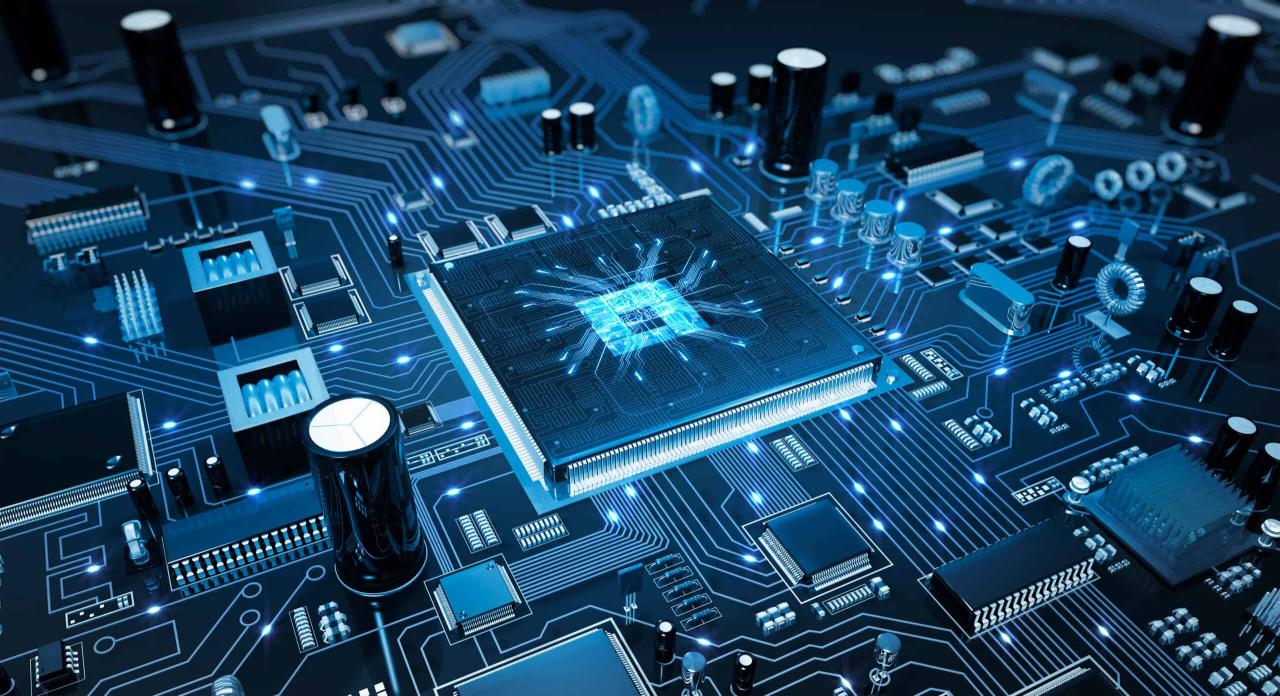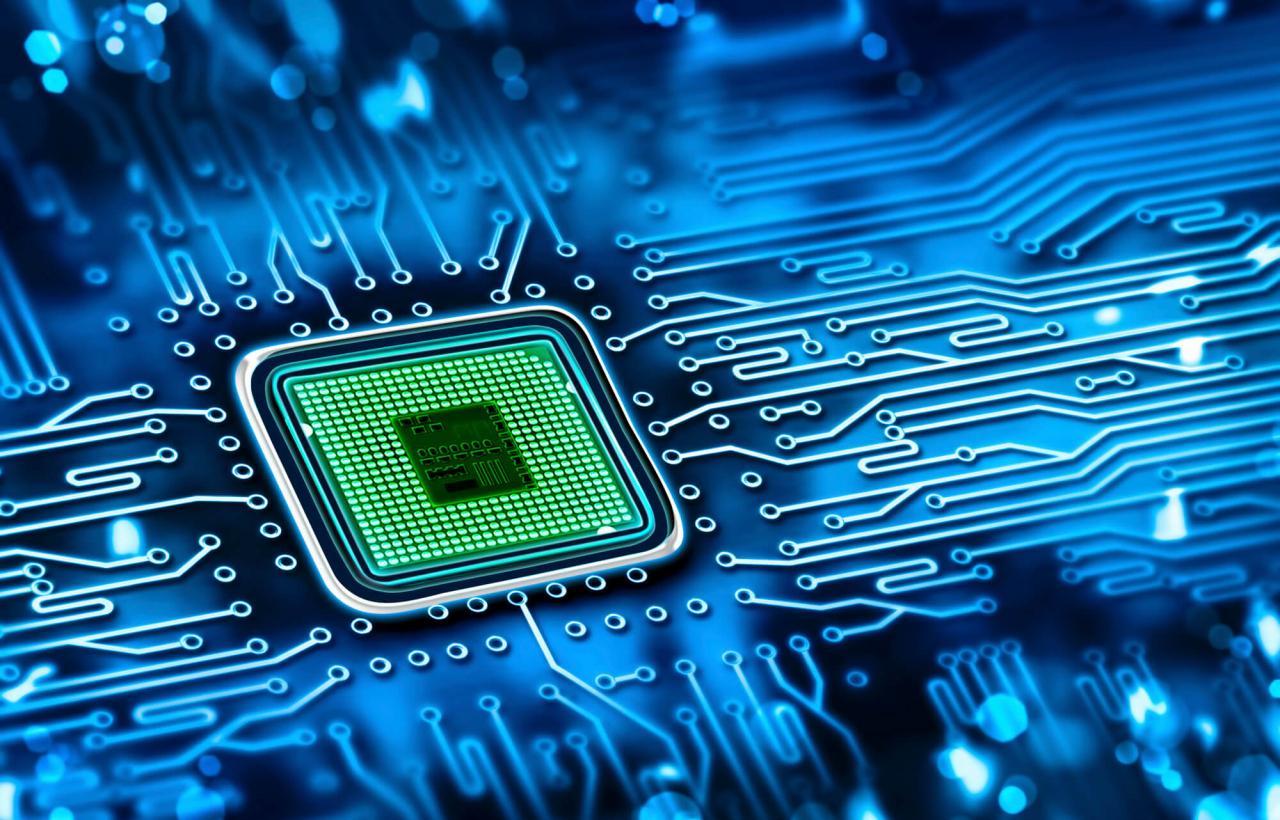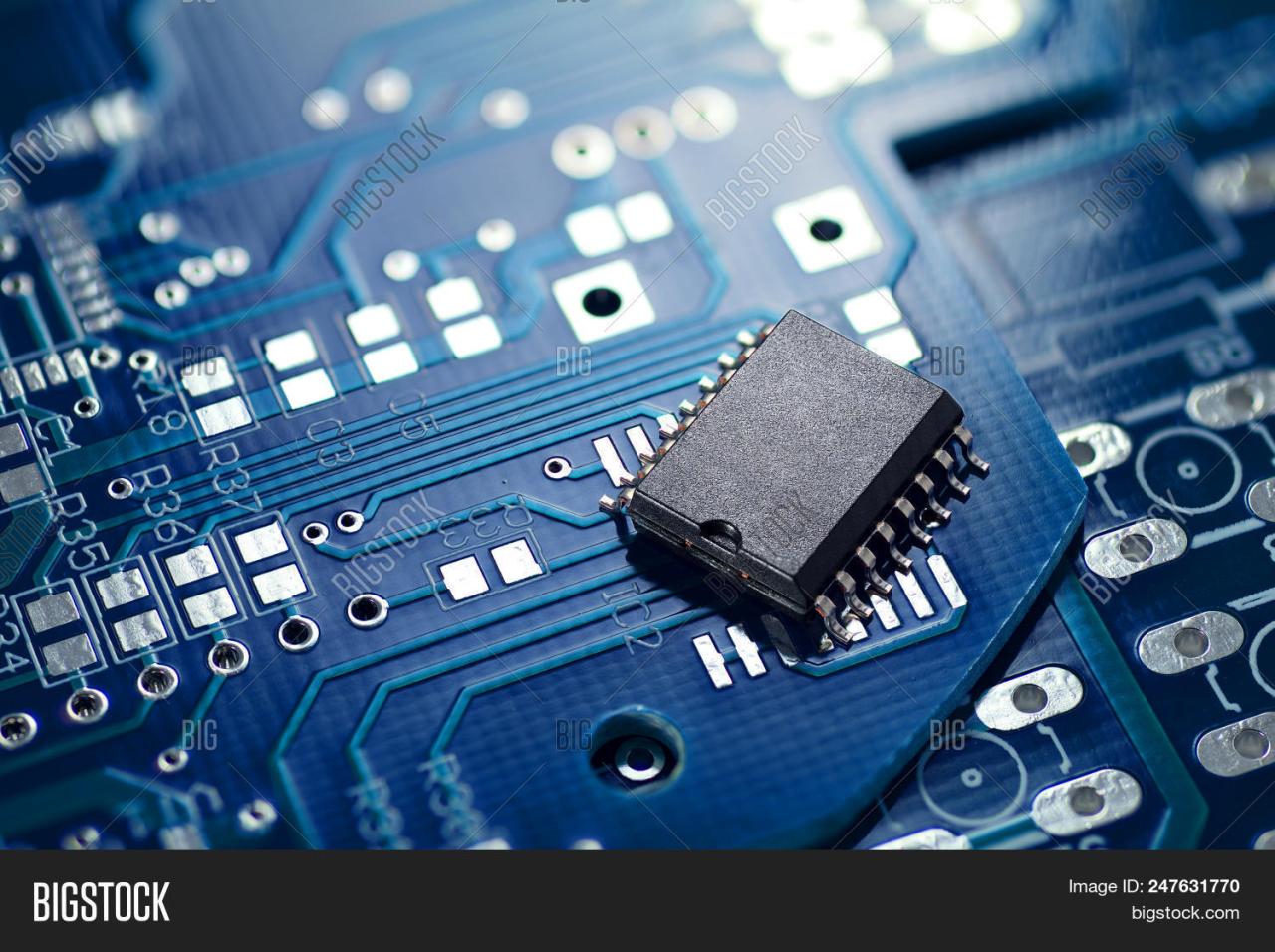Chip iPhone represents the pinnacle of mobile technology, showcasing how advanced chip design and engineering have transformed the smartphone landscape. From powering everyday tasks to enhancing gaming experiences, each new generation of iPhone chips pushes the boundaries of what a smartphone can achieve.
The architecture and components of these chips play a crucial role in the device’s overall performance, influencing speed, efficiency, and battery life. As we delve into the intricacies of chip technology in iPhones, we uncover the meticulous manufacturing processes, compare the evolutionary leap in performance across generations, and explore the innovations that keep Apple at the forefront of the tech industry.
Understanding the Chip Technology in iPhone

The chip technology within the iPhone is a testament to Apple’s commitment to innovation and performance. Each generation of iPhone is equipped with chips that enhance efficiency, processing power, and battery life, providing users with a seamless experience. Understanding the architecture, manufacturing process, and performance comparisons of these chips reveals the sophistication behind Apple’s mobile devices.
The architecture of the iPhone chip is complex, integrating various components that work harmoniously to deliver high performance. Central to this architecture is the system-on-chip (SoC) design, which combines multiple functions onto a single chip. Key components typically include the central processing unit (CPU), graphics processing unit (GPU), neural engine, image signal processor, and various controllers for interfacing with memory and peripheral devices. This integration reduces the physical space required and enhances power efficiency, while also allowing for faster data processing and improved graphics capabilities.
Components of iPhone Chips, Chip iphone
The iPhone chip architecture is composed of several critical components, each contributing to the overall functionality of the device. Understanding these components is essential for appreciating the performance attributes of iPhones. The primary components include:
- Central Processing Unit (CPU): The main processor that executes instructions and performs calculations. Recent models utilize multi-core architectures for improved multitasking.
- Graphics Processing Unit (GPU): Responsible for rendering graphics and images, which is vital for gaming and high-definition video playback.
- Neural Engine: A dedicated processor that enhances machine learning tasks, enabling features such as facial recognition and language processing.
- Image Signal Processor (ISP): Optimizes camera functionality by processing images and enhancing photos taken with the device.
- Memory Controllers: Manage the communication between the CPU, GPU, and RAM, ensuring efficient data flow and access.
Manufacturing Process of iPhone Chips
The manufacturing process of iPhone chips is highly sophisticated and requires advanced semiconductor fabrication techniques. This process typically involves multiple stages, including:
- Design and Prototyping: Engineers design the chip architecture using sophisticated software tools to simulate its performance before actual production.
- Fabrication: The chips are produced using photolithography, where light is used to transfer circuit patterns onto semiconductor wafers. This step involves etching, doping, and layering materials to create the desired circuits.
- Testing: After fabrication, each chip undergoes rigorous testing to ensure functionality, performance, and reliability. This includes stress testing and performance benchmarks.
- Packaging: The final chips are packaged for integration into devices, ensuring protection against physical and environmental stressors.
Performance Comparison of iPhone Chips
Over the years, Apple’s iPhone chips have seen significant advancements in performance and efficiency. Comparing different generations provides insight into how technology evolves. Key benchmarks include:
- A11 Bionic: Introduced in the iPhone 8 and iPhone X, this chip featured a six-core CPU and a three-core GPU, delivering performance enhancements that revolutionized mobile gaming.
- A12 Bionic: Used in the iPhone XR and XS, it was the first to utilize a 7nm process technology, resulting in improved performance and energy efficiency.
- A13 Bionic: Launched with the iPhone 11, this chip optimized machine learning capabilities significantly, introducing new computational photography features.
- A14 Bionic: Introduced with the iPhone 12, it offered a 5nm process, enhancing performance while reducing power consumption further.
- A15 Bionic: Found in the iPhone 13 series, this chip focused on graphics performance and machine learning, ensuring that high-resolution gaming and video processing are smoother.
“The evolution of iPhone chips not only showcases technological advancements but also reflects Apple’s strategic direction in enhancing user experience.”
The Role of Chip in iPhone Performance

The chip in an iPhone serves as the core component that drives its overall performance. Apple’s proprietary chips, such as the A-series, are designed to maximize speed, efficiency, and user experience. This section delves into the significant impact of the chip on various aspects of iPhone performance, including device speed, battery life, and graphics capabilities.
Influence on Device Speed and Efficiency
The performance of an iPhone is heavily reliant on the capabilities of its chip. Apple’s A-series processors are built using advanced manufacturing techniques, which allows them to achieve higher clock speeds while maintaining lower power consumption levels. This leads to faster application launch times and smoother multitasking experiences.
Examples of this can be seen in tasks such as video editing or heavy gaming, where the chip enables seamless transitions and rapid processing of complex operations. Additionally, with machine learning capabilities integrated into the chip architecture, user interactions become more efficient as the device can predict and respond to user needs more intuitively.
Impact on Battery Life and Power Consumption
One of the standout features of Apple’s chip technology is its contribution to battery efficiency. The chips are optimized not only for performance but also for power management. This dual focus ensures that while the device operates at peak performance, it does so without draining the battery excessively.
The efficiency of the chip can be quantified in terms of performance per watt, a crucial metric for mobile devices. For instance, the A15 Bionic chip delivers high performance while maintaining impressive battery life, often lasting a full day under regular use. This is partly achieved through dynamic power management features that regulate energy consumption based on the processes running at any given time.
Enhancement of Graphics and Gaming Performance
The chip plays a pivotal role in enhancing the graphical capabilities of the iPhone, significantly impacting gaming experiences and visual fidelity. Advanced GPUs integrated into Apple’s chips provide the necessary power to render high-quality graphics smoothly.
With technologies such as Metal, Apple’s graphics API, developers can take full advantage of the chip’s capabilities to deliver stunning visuals and complex animations. The result is an immersive gaming environment that rivals console experiences. The A14 Bionic chip, for instance, brought considerable improvements in graphics performance, allowing for richer textures and more intricate environments, solidifying the iPhone’s position as a leading device for mobile gaming enthusiasts.
Overall, the chip is central to the iPhone’s performance, influencing not just speed and efficiency, but also energy consumption and graphical output, making it a critical component in delivering an exceptional user experience.
Innovations in iPhone Chip Design: Chip Iphone
The evolution of chip technology in iPhones has been marked by a series of groundbreaking innovations that have significantly influenced smartphone performance and capabilities. Apple has consistently pushed the boundaries of what mobile processors can achieve, leading to powerful, efficient, and smart devices that enhance user experience. Understanding these innovations provides insight into the rapid advancement of mobile technology and how Apple continues to lead the market.
One of the key aspects of innovation in iPhone chip design is the integration of artificial intelligence (AI) capabilities, which has transformed how devices process data and interact with users. This integration not only boosts performance but also enables features such as improved camera functionalities, personalized user experiences, and enhanced security measures.
Timeline of Key Innovations in iPhone Chip Technology
The journey of iPhone chip technology is characterized by several landmark developments. The following timeline highlights these key innovations:
- 2007: The original iPhone is powered by the ARM1176JZF-S processor, setting the stage for future advancements.
- 2010: The A4 chip introduces a custom design, enhancing power efficiency and performance.
- 2013: The A7 chip becomes the first 64-bit processor in a smartphone, significantly boosting performance.
- 2017: The A11 Bionic chip introduces a neural engine, laying the foundation for AI capabilities in iPhones.
- 2020: The A14 Bionic chip brings further improvements, including a 5-nanometer process technology and enhanced machine learning capabilities.
- 2022: The A16 Bionic chip powers the iPhone 14 Pro, featuring advanced graphics performance and energy efficiency.
Integration of AI in Latest iPhone Chips
The integration of AI technology into the latest iPhone chips represents a significant leap forward in mobile computing. Each chip generation has introduced more advanced neural engines, which are specialized hardware designed to accelerate AI and machine learning processes. This integration allows for real-time data processing and advanced features that enhance user experiences.
Recent innovations include:
– Camera Enhancements: The neural engine can analyze images in real time to improve photo quality through features like Smart HDR, Night Mode, and computational photography.
– Personalized Experiences: AI algorithms learn user habits and preferences, allowing the iPhone to suggest app usage patterns or shortcuts for frequently used tasks.
– Enhanced Security: Features like Face ID and on-device processing of personal data ensure user privacy while maintaining high security.
Comparison of Latest Chips Versus Previous Models
To better understand the advancements in iPhone chip technology, the following table compares the features of the latest chips with their predecessors:
| Feature | A14 Bionic | A16 Bionic |
|---|---|---|
| Process Technology | 5nm | 4nm |
| Neural Engine Cores | 16 | 16 |
| Performance Cores | 4 | 6 |
| Graphics Cores | 4 | 5 |
| AI Performance (TOPS) | 11 | 17 |
The comparison illustrates the significant advancements in processing power, energy efficiency, and AI capabilities, showcasing how Apple continually enhances the iPhone’s performance through innovative chip design.
Future Trends in iPhone Chip Development

As technology advances at a rapid pace, the evolution of iPhone chips is set to play a crucial role in enhancing user experience and device capabilities. Future iPhone chips are expected to leverage state-of-the-art manufacturing processes, adopting next-generation materials and architectures that will significantly improve performance and efficiency. With the advent of new technologies, such as 5G, the design and functionality of these chips will undergo transformative changes, enabling features that were previously unimaginable.
The integration of evolving technologies, particularly 5G, will necessitate significant adaptations in chip design. Future iPhone chips are likely to incorporate advanced modem capabilities to support faster data speeds and lower latency. This will enable seamless streaming, real-time gaming, and enhanced AR/VR experiences. Moreover, the demand for improved energy efficiency will drive innovations in chip design, as manufacturers strive to balance performance with battery life.
Challenges in Next-Gen iPhone Chip Development
The journey towards developing next-generation iPhone chips is fraught with challenges that engineers and designers must overcome. Understanding these hurdles is essential for anticipating the future landscape of smartphone technology.
- Miniaturization: As chips become smaller, maintaining performance while reducing heat generation and power consumption is becoming increasingly complex.
- Integration of AI: Incorporating advanced AI capabilities into chips presents challenges in terms of processing power and architectural design to support machine learning tasks efficiently.
- Thermal Management: Managing heat dissipation remains a critical challenge, especially with higher power demands from advanced features like 5G and AI capabilities.
- Supply Chain Issues: Global supply chain disruptions can impact the availability of essential materials and components needed for chip manufacturing.
- Regulatory Compliance: Adhering to evolving regulations regarding data privacy and security requires continuous updates and modifications in chip design.
“The next generation of iPhone chips will not only need to be faster and more efficient but also smarter, with capabilities that can adapt to user behaviors and preferences.”
FAQ Section
What is the latest chip used in iPhones?
The latest chip used in iPhones is the A16 Bionic, found in the iPhone 14 Pro models.
How does the chip affect gaming performance?
The chip enhances gaming performance by providing faster processing speeds and better graphics rendering capabilities.
What advancements can we expect in future iPhone chips?
Future iPhone chips are expected to feature improved processing power, energy efficiency, and advanced AI capabilities.
How long does an iPhone chip typically last?
An iPhone chip can last throughout the lifespan of the device, typically around 4-5 years before it may become outdated.
Is the chip upgradeable in iPhones?
No, iPhone chips are not upgradeable as they are soldered onto the motherboard of the device.
The Samsung S9 Plus stands out with its impressive camera capabilities and sleek design, making it a popular choice among smartphone enthusiasts. Its performance, paired with a vibrant display, ensures that users enjoy a top-notch experience, whether they’re gaming or streaming videos.
If you’re looking to upgrade your device, don’t miss the latest promotion on iPhones. With enticing offers and discounts, it’s the perfect time to grab the latest model and enjoy cutting-edge technology at a fraction of the price. Stay updated to make the most of these deals!